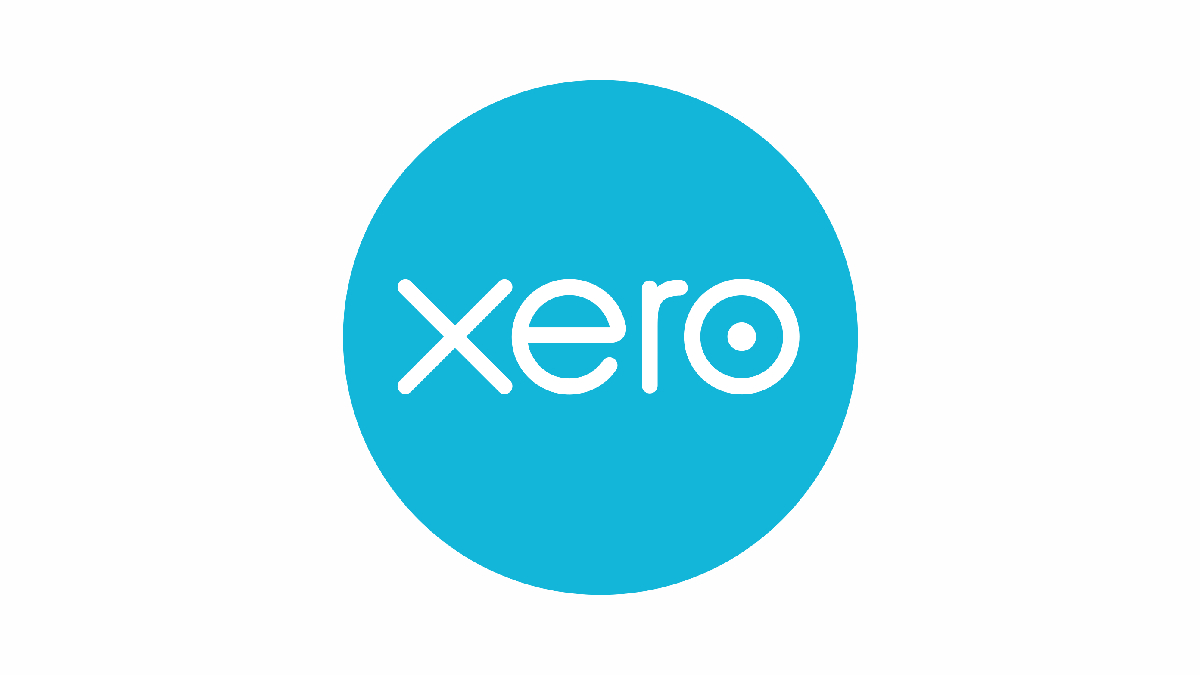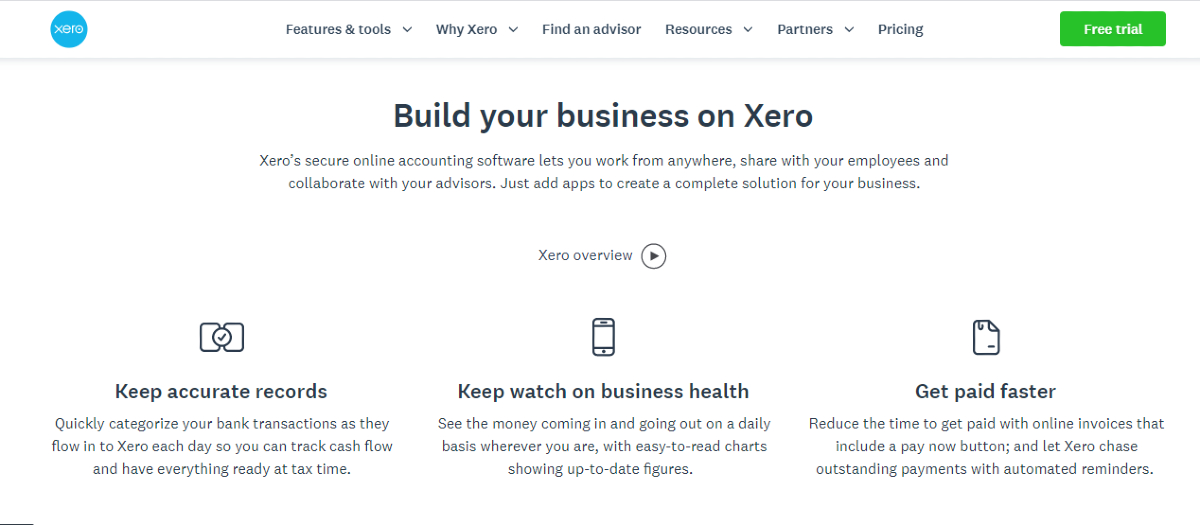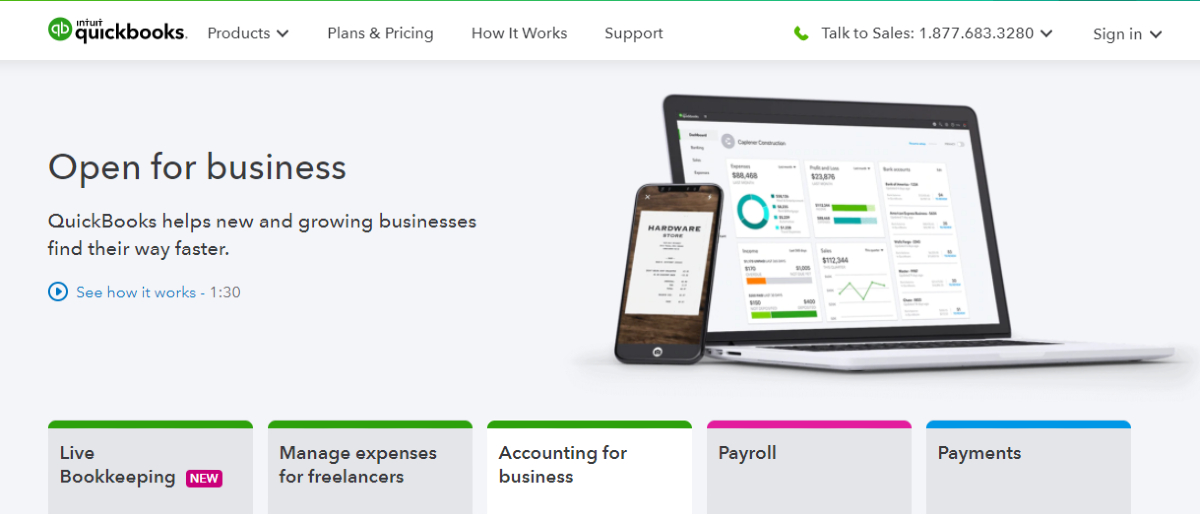Xero vs Quickbooks: Which's the best accounting software?
An accounting software with a cloud-based system has nowadays been regarded as one of the mightiest tools for merchants to manage their business well. To many people, it will be a shortcoming if people don’t mention these two platforms: Xero and Quickbooks. They are useful tools providing users with a clear view of their accounting, save taxes as much as possible, and keep track of time and project.
Both Xero and Quickbooks are created for small and medium-sized businesses. They also offer users similar features so that they often face difficulty in selecting suitable software between these two ones.
Understanding that, this article will give you sufficient information to compare and contrast between Xero and Quickbooks. With such criteria as features, pricing, ease of use, integration, security, customer service, and customer reviews, you will be able to figure out the best tool for your company.
An overview about Xero and Quickbooks
About Xero

Founded in 2006 in New Zealand, Xero is one of the most powerful accounting tools for small and medium-sized businesses in the world. “Beautiful business” is the first thing that comes to people’s minds whenever they think about Xero. This accounting software gives merchants the ability to make sure that their accounting process runs smoothly and efficiently. More than that, Xero is also friendly to users so that people, even the freshers, can easily manage it after a short time.
About Quickbooks

Believed by more than 7 million people all over the world, Quickbooks Online is another leading software for accounting in the market. Launched by Intuit, this software is described as “smarter business tools for the world’s hardest workers.” Via Quickbooks Online, you will be provided with the cloud-based system, which allows them to simplify their workflow. Merchants can monitor bills, invoices, keep track of projects and even track the miles just by a smartphone so that you will save a large amount of time spent on repeated actions and procedures.
According to Quickbooks, 98 percent of their customers agree that thanks to Quickbook, their businesses run more efficiently and seamlessly, which is also the reason why this solution has built a strong relationship with customers, and considerable reputation among businessmen.
In short, it can be seen that both Xero and Quickbooks Online have their own benefits and drawbacks.
For Xero, it receives lots of love from users on reviewing platforms. For example, in G2, the number of people leaving positive reviews about Xero on average is higher than the one of Quickbooks even though Xero get fewer feedback than Quickbooks Online. Xero seems to be more common in the world of startups than Quickbooks since its image brand is younger than Quickbooks, and the main concern of Xero is cleaning usability.
Meanwhile, Quickbooks exists in the market longer so that it is developed strongly and preferred by accountants, particularly accountants in the United States. In fact, it is inevitable that the United States is the country of Quickbooks since 80 percent of the market share estimated there belongs to Quickbooks. And, they also inform that the average amount of money their customers can save each year with the help of it is $3,534.
Xero vs Quickbooks: Which is the best?
Xero vs Quickbooks: Features
Aiming at the same targeted customer which are small and medium-sized businesses, both Xero and Quickbooks provide users with multiple similar functionalities like contact management, invoicing, estimates, multi-currency, sales tax, and more.
However, while Xero tries to satisfy all the clients globally, the main market of Quickbooks is in the United States and Canada.
| Features | Xero | Quickbooks |
|---|---|---|
| Invoicing | Yes | Yes |
| Estimates | Yes | Yes |
| Contact Management | Yes | Yes |
| Lead Management | No | Yes |
| Expense Tracking | Yes | Yes |
| Bank Reconciliation | Yes | Yes |
| Charts of Accounts | Yes | Yes |
| Fixed Asset Management | Yes | Yes |
| Accounts Payable | Yes | Yes |
| Inventory | Yes | Yes |
| Project Management | Yes | Yes |
| Time Tracking | Yes | Yes |
| Reports | 55 | 130 |
| Budgeting | Yes | Yes |
| Print Checks | Yes | Yes |
| Calendar and To-Do List | No | Yes |
| Multi-Currency | Yes | Yes |
| Sales Tax | Yes | Yes |
| Tax Support | No | Yes |
Xero

In the Xero system, their features can be classified into five main categories responsible for improving them: dashboard, business, accounting, projects, and finally, contacts.
In the dashboard, you will be able to get a clear and beautiful-displayed overview of your business in a short time. It can be about your company’s multiple topics, like bank balances, invoicing, revenue, etc. Moreover, you are also given the right to customize your dashboard so that you can easily modify it to give you the necessary information rapidly.
You can find every type of document related to the payment process in the business category, such as invoices, purchase orders, bills to pay, and more. Based on the type, Xero will display the bill’s information differently so that users can gain what they want to know quickly.
For instance, it is simple to enter a new invoice in Xero with plenty of available options in almost all fields. When everything is completed, it is time for you to send the bill to your clients via email. In addition, Xero automatically applies the payment if you receive the payment online and it also allows you to handle the payment in your regular bank reconciliation.
In accounting, there is everything you need to deal with the bank and control the chart of the account and monitor the reports of finance.
Meanwhile, the project category offers you the tools to manage your project well and track the time by the ability to record.
As the name suggests, the contact part lets users control their contacts, like consumers, suppliers, contractors, etc., efficiently. It also generates various reports that give you a reliable source to manage your business more effectively.
Besides, Xero also creates the version for mobile devices in both IOS and Android. Therefore, users can manage their receipts, contacts, bank reconciliation with just a phone, and even create a new invoice.
Quickbooks

Quickbooks also separates the features into different categories. Nevertheless, instead of putting several types in one category, Quickbooks lets them stand alone, which means that their categories in this software will be more detailed than Xero. Some of the categories can be named as electronic banking, solid invoicing capability, payment acceptance, and bill management.
Based on different preferences, each person will have their evaluation. It is the same with Quickbooks. But in general, people tend to highly appreciate the user-friendly system, which helps them get familiar with and make use of it skillfully in the shortest time.
Considering it as the main point, Intuit offers users Quickbooks Online which is extremely easy to use even with the freshers. Through Quickbooks, invoices can be created in a couple of minutes. What’s more, the credit card and bank account number can be imported to a customer’s account in a simple manner. This, thus, let the payment process run immediately.
Additionally, users can give their customers two options the ability to automatically apply for the payment when they are deposited or do it by themselves. In the expense category, merchants can input invoices for vendors that allow them to pay the bill any time they want, while Quickbooks Online can support them in monitoring their customers, suppliers, and staff by the Intuit payroll.
Also, there is a part named Report Centre in Quickbooks Online, which creates many reports. These reports can give readers the data about all the standard financial statements and management reports.
Xero vs Quickbooks: Pricing

| Xero | Quickbooks |
|---|---|
| Early: $9 per month | Simple Start: $25 per month |
| Growing: $30 per month | Plus: $70 per month |
| Established: $60 per month | Advanced: $150 per month |
| Self-employed: $15 per month |
The plan with the lowest price in Quickbooks is the Self-employed but let’s explore it later. We will now go into detail about the three packages, which in some aspects are relevant in Xero and Quickbooks pricing.
The first one is Early in Xero and Simple Start in Quickbooks Online, which cost $9 and $25 per month, respectively. It is true in both Xero and Quickbooks Online that the cheaper your plan is, the fewer features you will be offered. By paying 9 dollars each month, the ability users can do in Xero is severely restricted. They are reconciling 20 bank transactions, capturing 5 bills and receipts, as well as delivering invoices and quotes.
On the other hand, there are more functionalities in the Simple Start like sending estimates, invoicing and payment acceptance, tracking miles, income, expense, managing 1099 contractors, and more. However, the number of employees who can access Quickbooks Online in Simple Start is only one. This seems not convenient, but it turns out to help small companies better deal with the shortage of limit for transactions.
The mid-tier plans among three packages in these two systems are Growing in Xero and Plus in Quickbooks Online. With Growing, the fee for you is $30 each month, and you can do everything as in the Early plan but with no limit. Therefore, you can freely do what you think is necessary without worrying about the restriction.
In addition to all the features in the Simple Start plan, the Plus one offers users numerous additional features like bill management and payment, time, project profitability, inventory tracking, as well as increasing the number of people accessing the software to five. This plan is also the package that is selected most among all the plans in Quickbooks.
With the price of $60 per month, the Established plan is the most expensive package in the pricing plans of Xero. Via this plan, users will be able to access multiple additional functionalities besides the one of the Growing packages. They are multi-currency, claims capture and management, project time, and cost tracking.
Users have to select the most expensive plan to track time and cost for the project in either Xero. Likewise, in Quickbooks Online, it is the Advanced plan with a fee of $150 per month. This plan includes all the features of the Plus one like tracking time, sales, tax, etc. and it also adds some other features which can be highlighted business analytics & insights, customize access by role, on-demand online training, automate workflow, etc. Furthermore, the number of people accessing Quickbooks in your company is five times higher than in the Plus one which is 25 employees.
Besides, Quickbooks also creates a special plan which is Self-employed for freelancers. This plan is made with suitable functionalities for businesses with only one person. Users can track income and expenses, capture and organize receipts, estimate quarterly taxes, invoice and accept payment, keep track of miles, and receive basic reports.
More than that, it is true that processing payroll is also a big deal with small businesses. Quickbooks offers users the feature to process payroll for merchants, which makes it more convenient than Xero. There are three plans in Quickbooks, which are Payroll Core ($45/ month), Payroll Premium ($75/ month), and Payroll Elite ($125/ month). Depending on the plans you select, the money to plus an employee is from $4 to $10 each month.
Actually, there is no limit for people to access a plan, but in turn, it doesn’t provide the ability to process payroll like dedicated payroll software. Thus, to calculate the salary for the employees, Xero users have to integrate with other apps like Gusto, Tanda, etc. Fees will be different among the platforms, but it frequently charges for each month and each employee. So if you want to choose a suitable app carefully, it will take a long time.
Xero vs Quickbooks: Ease of use

Even though Quickbooks and Xero have their own learning curves, it seems much easier to get started with Xero, particularly when you are a fresher in terms of accounting software.
With Xero, you can quickly know which functions are used since it attaches a label explaining clearly its functions so that you will get to know it quicker. Moreover, Xero’s workflow is more straightforward than the one in Quickbooks: you can send invoices and pay bills in a couple of minutes. It is also believed that Xero owns a better support center, which helps you understand thoroughly every feature in this system.
In addition, Xero app for mobile devices is available in both IOS and Android so that you can work with it directly from your own smartphone. However, you are unable to make use of all the features as in desktop. You are allowed to do basic actions like importing data, but it is enough because mobile phones are often used in emergencies or add some new data when your laptop is not beside you.
On the contrary, Quickbooks is not famous for the ease of use despite its popularity. There are plenty of capabilities and options in Quickbooks Online so that you can do many things with it. Nevertheless, it also means that you have to learn a lot to be familiar with this software.
Therefore, if it is not necessary to have an advanced accounting tool, Xero will be a perfect option for you.
Xero vs Quickbooks: Integration

Xero has strong integration with more than 800 platforms in multiple categories such as CRM, payment acceptance, inventory management, point of sales, payroll, time tracking. It can be mentioned as Stripe, PayPal, GoCardless, Salesforce CRM, Homebase, Hubstaff, and so on. With these various software, you can freely select the suitable one for your business.
On the other hand, the number of platforms integrating with Quickbooks Online is much fewer which are around 200. These platforms are all great choices for different categories like inventory, payroll, CRM, time tracking in small businesses like PayPal, TSheet, Stripe, Bill Pay, etc.
As a result, integration is your primary concern, Xero with over 800 integrations is definitely your best option.
Xero vs Quickbooks: Security

Actually, this criterion is not too fair when comparing locally-installed software and cloud-based software. When you install a locally-installed software, you are responsible for your own safety, nothing is created to support you. Yet, it is completely possible to increase your security with the locally-installed software, even higher than the one in cloud-based one. The key point here is that you need to deeply understand your software and know how to raise the data safety to the maximum.
As cloud-based software, Xero is better in terms of security since it is created with the security features right from the start. Users will be given numerous methods for the strongest security precautions.
Xero vs Quickbooks: Customer support

In the Xero system, users are able to get the help via these ways: email, user guide, knowledge base, help articles, in-product help, user community, and product training. It can be seen that the customer service in Xero is pretty good, but it has lately decreased to similar as Quickbooks Pro, such a misfortune. Despite providing the email address, users never receive replying to their queries within a day. Besides this, there are multiple other ways to get support, but it is still tricky to answer rapidly.
Quickbooks are famous for poor customer service, so it is not surprising that its customer support is regarded as lower than Xero customer support. As advertised, there are eight ways to connect customer support: in-product help, user community, knowledge base, product training, help articles, emails, messages, and callbacks. With the appearance of phone support, Quickbooks possesses an outstanding point compared to Xero, but it sounds like this channel works ineffectively. Users have to wait for a long time to get the response, and the answers from the support center are not always useful. Furthermore, it is compulsory to pay more money to get help from Quickbooks if you have not chosen the Plus plan yet.
Xero vs Quickbooks: Customer reviews

In general , Xero gives users happier experiences which helps it gain more positive feedback and ratings. As mentioned above, Xero gains 4.5/5 stars and 4.31/5 stars in G2 and Getapp respectively while the stars Quickbooks Online gets is 4 and 4.26 out of 5.
Meanwhile, it is clear that the quantity of negative feedback in Quickbooks’ review is higher than in Xero. Obviously, Quickbooks has a longer history, and their customers are also more so they will receive more reviews. However, the percentage of 1 out of 5 stars is pretty high in both Quickbooks’ products in general and Quickbooks Online. People often complain about the steep learning curve, poor customer support as well as compulsory upgrades.
In fact, besides the good feedback from customers, Xero also receives complaints, but its quantity is not considerable. These complaints are usually about the app on mobile devices, the recent increase in price, and steep learning curve.
Conclusion
In short, it is difficult to say which one is the better app for users as it can be seen from the comparison and contrast above: even though Xero is the winner in more aspect like ease of use, integration, customer support, and customer review, they don’t play the critical role in deciding the best app. In contrast, Quickbooks ties in some criteria like feature and security, but it beats Xero in a big issue: It is pricing.
Therefore, to decide which one is the best software, each user will have their answer. Depending on their requirements and expectations, they will know which one, Xero or Quickbooks is right for them, and of course, the software they are using is the best.
New Posts






